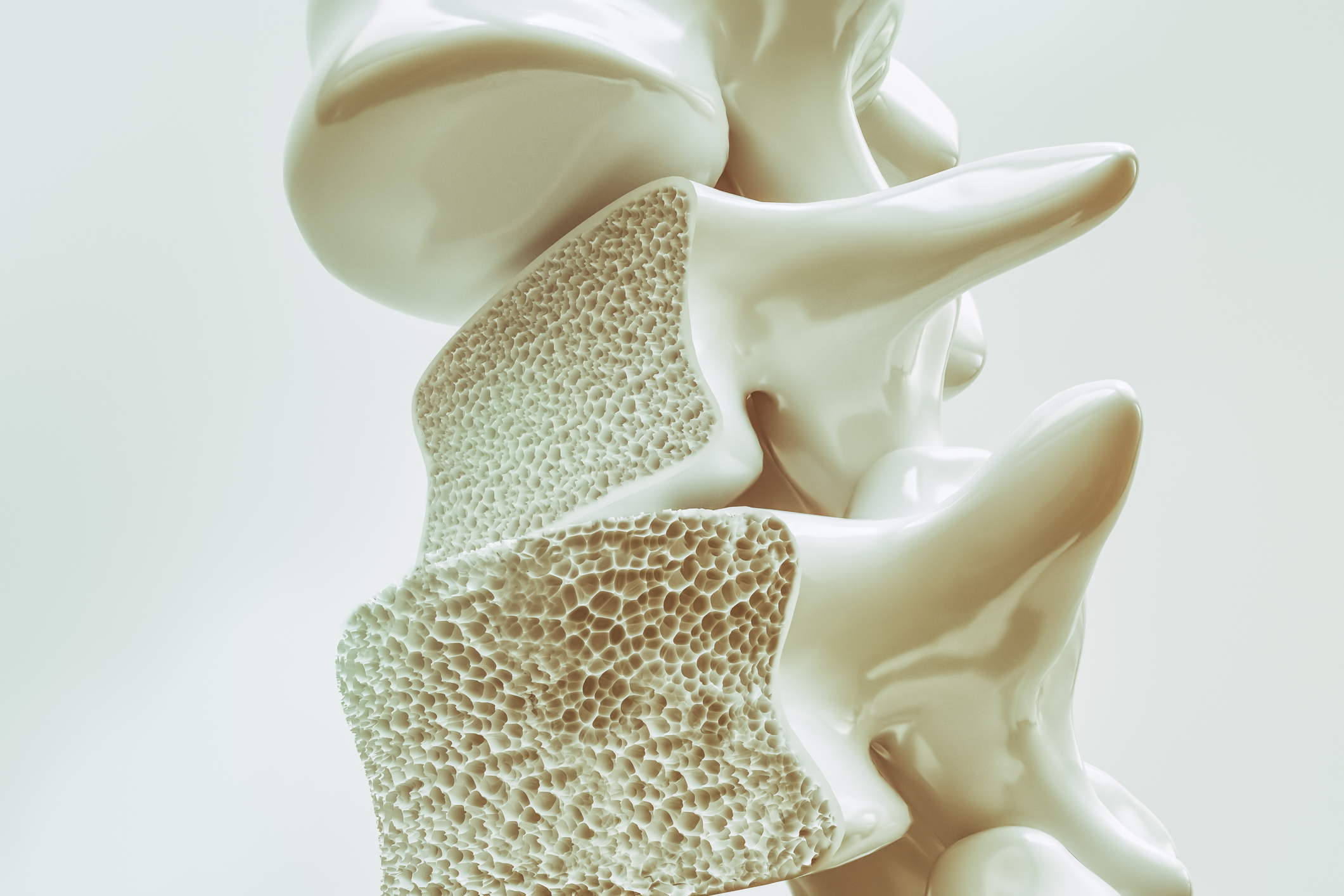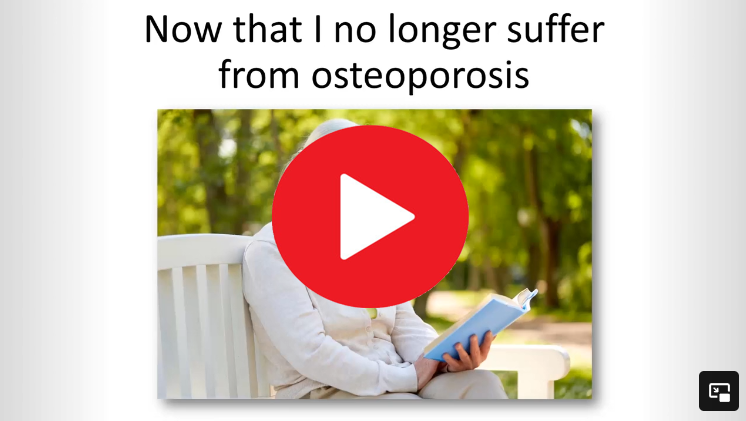
This eBook from Blue Heron Health NewsBack in the spring of 2008, Christian Goodman put together a group of like-minded people – natural researchers who want to help humanity gain optimum health with the help of cures that nature has provided. He gathered people who already know much about natural medicine and setup blueheronhealthnews.com. Today, Blue Heron Health News provides a variety of remedies for different kinds of illnesses. All of their remedies are natural and safe, so they can be used by anyone regardless of their health condition. Countless articles and eBooks are available on their website from Christian himself and other natural health enthusiasts, such as Julissa Clay , Shelly Manning , Jodi Knapp and Scott Davis. |
Bone Density and the Impact of Hypertension
Bone Density and the Effects of Hypertension
Hypertension (high blood pressure) can have a profound effect on bone health, including affecting bone density and the risk of osteoporosis. Although hypertension is usually associated with cardiovascular disease, recent research indicates that it can also have negative impacts on bone density in a variety of ways. Here’s how hypertension and bone health are interlinked:
1. Effects of Hypertension on Bone Density
Increased Risk of Bone Loss: Studies have shown that patients with hypertension have reduced bone mineral density (BMD), particularly in the hips and spine. The reasons are not fully understood, but it is likely that long-term blood pressure elevation causes changes in bone metabolism and eventually leads to bone loss.
Excretion of Excess Calcium: Hypertension can lead to a higher urine calcium excretion, a lower calcium content in the available bones. A lower availability of bone-building calcium can pile up over time to decrease the bones and increase their likelihood of breaking.
Side Effects of Medications: Certain blood pressure medications, especially thiazide diuretics, may influence calcium levels. Thiazide diuretics lower excretion of calcium, but chronic use of medications may still have some effects on the bones of some patients. Beta-blockers and ACE inhibitors, however, used to manage high blood pressure, have been less reported to impact bone density.
2. Hormonal Imbalance and Hypertension
Renin-Angiotensin System (RAS): The renin-angiotensin system is implicated in blood pressure control and may be implicated in the regulation of bone metabolism. Stimulation of this system, which is typically observed in hypertensive individuals, results in bone resorption (dissolution of the bone matrix) and results in bone loss as well as reduced bone density.
Aldosterone and Bone Health: Aldosterone, a hormone that regulates sodium and water levels, is elevated in individuals with high blood pressure. Aldosterone excess has been linked to increased bone turnover, leading to bone loss over time, especially in the spine and legs.
3. Inflammation caused by Hypertension
Chronic Inflammation: Hypertension is also often associated with chronic low-grade inflammation, which is deleterious to the bones. Pro-inflammatory cytokines such as tumor necrosis factor (TNF) and interleukins might increase the function of osteoclasts (cells responsible for bone resorption), leading to bone resorption and lower bone density.
Oxidative Stress: Hypertension contributes to oxidative stress that hurts bone cells that are in charge of bone development (osteoblasts). Such bone formation versus bone resorption imbalance can eventually lead to less bone mass and strength.
4. Hypertension Impact on Calcium Metabolism
Disrupted Vitamin D Synthesis: Hypertension was discovered to degrade the synthesis of vitamin D within the body which enables calcium uptake. Deficiency in vitamin D would add to bone weakening and exacerbated osteoporosis risk.
Bone Formation Damage: Rise in blood pressure can influence osteoblast functioning, the bones required for the formation of bone. It damages by changing the mechanism for restoring bone material once it is damaged, thus damaging bones all throughout life.
5. Relationship Between Hypertension and Fracture Risk
Increased Fracture Risk: The combination of decreased bone density and other factors like side effects of medication or impaired bone quality due to hypertension increases the risk of fractures, especially in the elderly. A fall can be more dangerous for people with both osteoporotic bones and hypertension because the risk of a severe fracture is greater.
Hip Fractures: Hip fracture is particularly reason for alarm, as it will most frequently cause permanent disability in the elderly. Hypertension also contributes to hip fracture risk both by weakening bones and by increasing the individual’s susceptibility to falls that can be caused by medication or high blood pressure-related balance problems.
Protecting Bone Health by Managing Hypertension
Keep Bone Density: Periodic bone density testing is indicated in those with hypertension, especially those with the risk of osteoporosis or fractures.
Nutritional Balance Diet: Offer enough calcium and vitamin D to help keep bones strong. Take these nutrients from food sources including dairy, green vegetables, fortified food, and fatty fish in the form of a heart-healthy diet.
Physical Exercise: Weight-bearing exercise (e.g., walking, hiking, strength training) is required for the maintenance of both cardiovascular and bone integrity.
Medication Adjustment: Whenever possible, clinicians can modify antihypertensive drugs to minimize their impact on bone integrity. Thiazide diuretics may be chosen due to their capacity to reduce calcium loss, but other alternatives should be pursued in those with bone density issues.
Control Inflammation: Reducing inflammation through a healthy diet, effective stress management, and anti-inflammatory medications (if recommended) can prevent bone as well as cardiovascular diseases.
Conclusion
Hypertension may result in bone loss of density and the potential for osteoporosis and fracture. By taking a blend of dietary adjustment, exercise regularly, medication management, and lifestyle modification, one can reduce hypertension’s impact on bone strength and enjoy healthy bones and healthy hearts at the same time. Regular visits to physicians are essential in managing both conditions.
The Role of Statins in Bone Health
Statins are primarily prescribed to lower cholesterol levels and prevent cardiovascular disease, but emerging research suggests that they may also contribute to maintaining bone density. The following summarizes what is now known about how statins could influence bone mineral density and risk of bone fracture:
1. Statins and Bone Formation
Statins, through their mechanism of action as inhibitors of the enzyme HMG-CoA reductase, could affect bone metabolism by a variety of mechanisms:
???? Activation of osteoblasts (Bone Building):
Statins can enhance bone formation by activating osteoblasts, the bone-laying cells. Statins can enhance osteoblast differentiation and activity, which can lead to enhanced bone formation and thereby enhance bone density.
Statins have been shown to enhance the synthesis of proteins critical for healthy bone formation, including osteocalcin and collagen.
???? Effect on Bone Resorption
Statins may also have an effect on osteoclasts, the bone tissue-bursting cells. Statins may, in some research, retard osteoclast activity, which translates to decreased resorption of bone, therefore saving bone density.
2. Statins and Bone Mineral Density (BMD)
Statins’ effect on bone mineral density (BMD) has been the subject of much research:
???? Uncertain Findings in Studies:
Certain studies have proven that statins increase BMD and reduction in fracture risk, particularly among postmenopausal women or those at increased risk for osteoporosis.
Certain other studies have concluded to have neutral or mild effects on BMD and thus it has been assumed that statins may not directly cause increased bone density to a clinically significant degree in all patients.
???? Potential Benefits in Specific Groups
Statins may be particularly useful in patients with certain risk factors for osteoporosis, for instance, diabetes or coronary heart disease.
In individuals with osteoporosis or those already at high fracture risk, statins may have additional bone protective effects when combined with other therapy like bisphosphonates.
3. Statins and Risk of Fracture
Although the link between statin use and fracture risk is being investigated, studies indicate that statins may decrease the risk of fractures:
???? Decreased Fracture Occurrence:
Statins have been seen by some to decrease hip fracture and other bone fractures, most likely from its impact on bone development and potentially bone healing.
???? Bone Healing and Regeneration:
Statins have been shown to promote bone healing in certain animal models and human studies. This suggests that statins could play a role in fracture healing by improving bone regeneration processes.
4. Statins’ Impact on Osteoporosis Therapy
Even though statins are not typically used as first-line treatment for osteoporosis, their potential application as a secondary bone-protective therapy is being explored:
???? Adjunct to Osteoporosis Therapies
Statins can be added to the standard osteoporosis medications like bisphosphonates or denosumab, especially in patients at high cardiovascular risk. They could complement these medications by increasing bone formation and potentially reducing fractures.
???? Combination Therapy Considerations:
Combination of statins with other bone-altering drugs is under investigation to identify the optimal approach for patients at high cardiovascular risk and osteoporosis.
5. Statins and Potential Side Effects on Bone Health
Despite the potential benefits, concerns with long-term statin use and bone impact include:
???? Muscle Pain and Weakness:
Statins are a common side effect of muscle pain, which might lead to decreased physical activity. Reduced mobility and exercise would take a toll on the bones over time since weight-bearing exercises increase bone density.
???? Statin-Induced Diabetes:
Statins have been associated with a modest increased risk for type 2 diabetes, which, if not adequately controlled, will result in impaired bone health. Diabetes is an independent risk factor for osteoporosis and fractures, so the net impact on bone health should be considered in these patients.
6. Future Research Directions
With ongoing research into the interaction of statins with bone health, several areas of interest are emerging:
???? Long-Term Effects of Statins on Bone Health:
Research continues to investigate the long-term effects of statins on bone mineral density, fracture risk, and bone quality, particularly in older populations or those with underlying conditions like osteoporosis.
???? Statin-Specific Mechanisms in Bone Metabolism:
Researchers are also studying the precise mechanisms upon which statins might have an effect on bone metabolism, such as lipid-lowering and bone-regulating mechanisms, and whether statins may induce bone healing in the clinic.
Conclusion: Statins and Bone Health
Although statins are primarily prescribed for cardiovascular health, recent research has discovered they might also have bone benefits, specifically in the realm of bone building and fracture risk reduction. However, their impact on bone density and osteoporosis risk remains controversial, and more research must be conducted to establish their full impact on bone.
In people with both cardiovascular disease and reduced bone density, statins can contribute to a further benefit when added to standard osteoporosis therapies that strengthen bones, but cannot be used as the exclusive osteoporosis therapy.
Do you require more data on specific studies or treatment regimens for the treatment of both cardiovascular disease and bone?
The Bone Density Solution by Shelly ManningThe program is all about healthy food and healthy habits. As we discussed earlier, we develop osteoporosis due to low bone density. Therefore, you will have to choose the right food to help your calcium and other vitamin deficiencies. In addition to healthy food, you will have to regularly practice some mild exercises. Your doctor might offer you the same suggestion. However, the difference is that The Bone Density Solution will help you with an in-depth guide.
